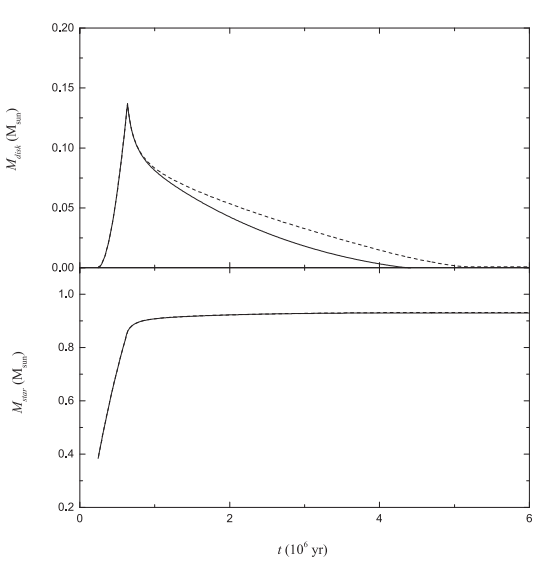Associated research fellow, Xiao Lin from Astrochemistry group at Xinjiang Astronomical Observatory, analyzed the influences of molecular clouds property to external photoevaporation efficiency in the research of the evolution and formation of protoplanetary disks around young stars in clusters. The related work has recently been published in The Astrophysical Journal (ApJ, 2018, 853, 22).
The formation and evolution of protoplanetary disks around young stars in clusters are often influenced by the high stellar density or the ultraviolet radiation from nearby massive stars. Massive OB stars in clusters provide strong extreme-ultraviolet (EUV) and far-ultraviolet (FUV) radiation, and consequently, the disks around the nearby low-mass stars may be heated and photoevaporated. Since most stars form in clusters, the properties of disks in these regions are crucial to understanding the diversity of extra solar planets.
We explore the effects of progenitor pre-stellar core properties on the evolution of disks with external photoevaporation in clusters. Since the strength of external photoevaporation is largely determined by the depth of the gravitational potential well of the disk, the external photoevaporation rate is the function of star mass and disk size. The properties of a core collapse set up the initial conditions of protoplanetary disks, so they influence the evolutions of star mass and disk size. Our calculations show that the core properties can dramatically influence the efficiency of external photoevaporation. For the core with low angular velocity, most core mass directly falls onto the central star or onto the disk near the star. External photoevaporation is suppressed even if external radiation from nearby massive stars is strong. In this case, the disk evolution in clusters is primarily driven by its own internal viscosity. However, if the core angular velocity is high, most core mass falls onto the disk far from the central star. External photoevaporation is so strong that the disk mass is severely evaporated. Finally, the star mass is very low and the disk lifetime is very short.
Article Link: http://iopscience.iop.org/article/10.3847/1538-4357/aa9ff1/meta

Evolution of minimum angular velocity of a cloud core and protoplanetary disks

Evolution of high angular velocity of a cloud core and protoplanetary disks